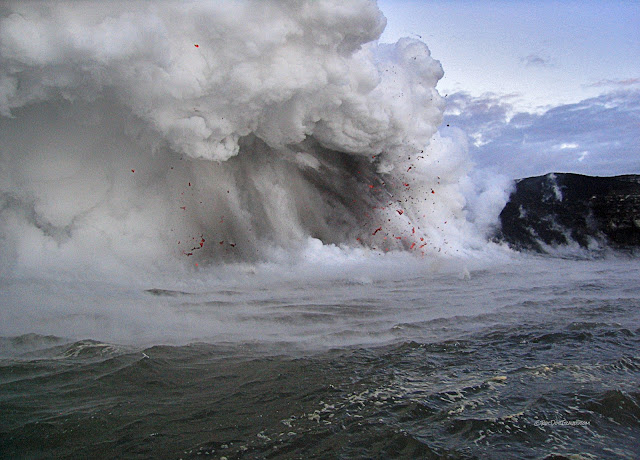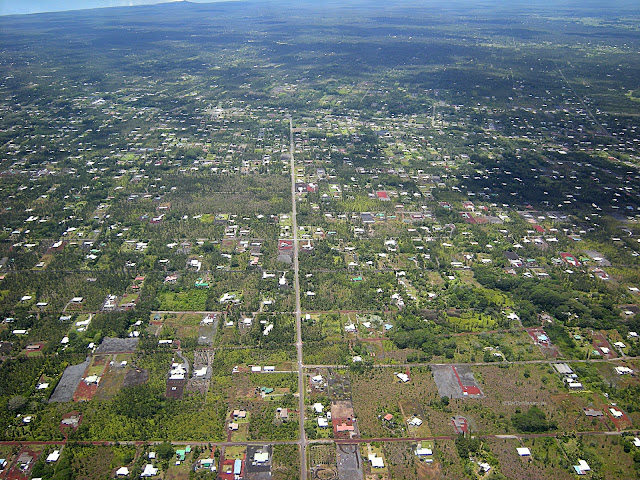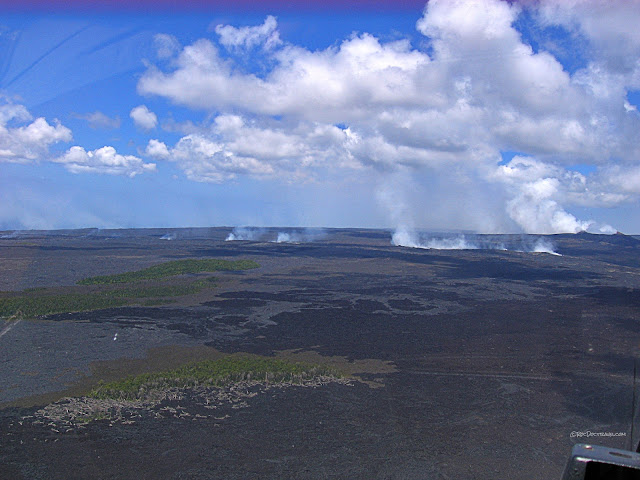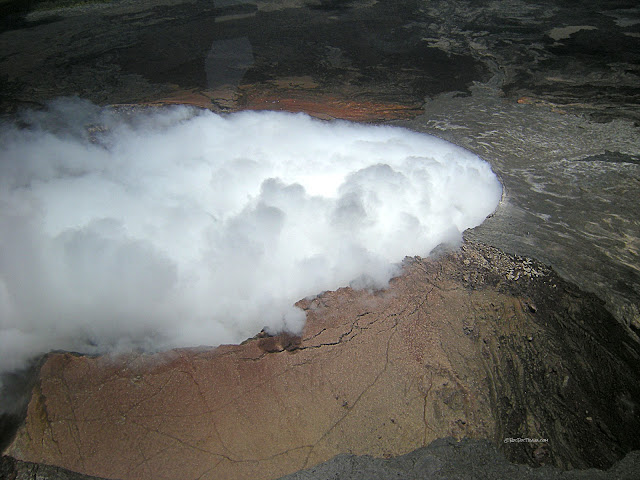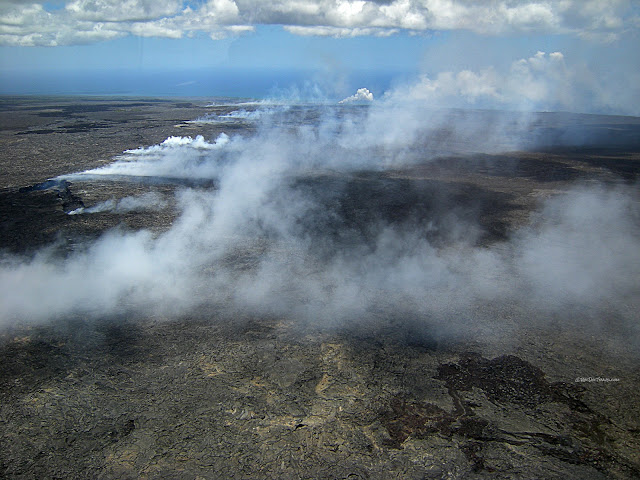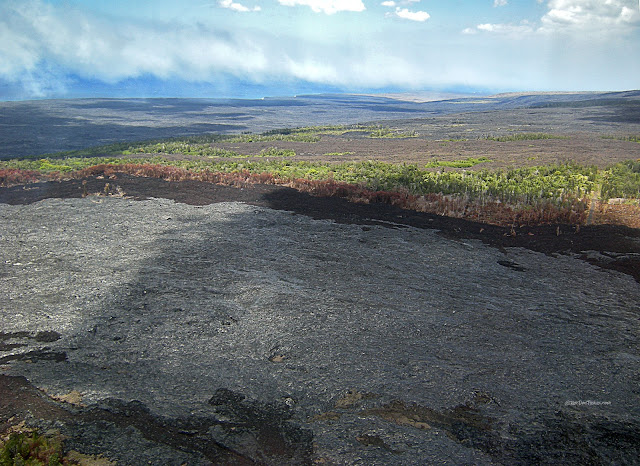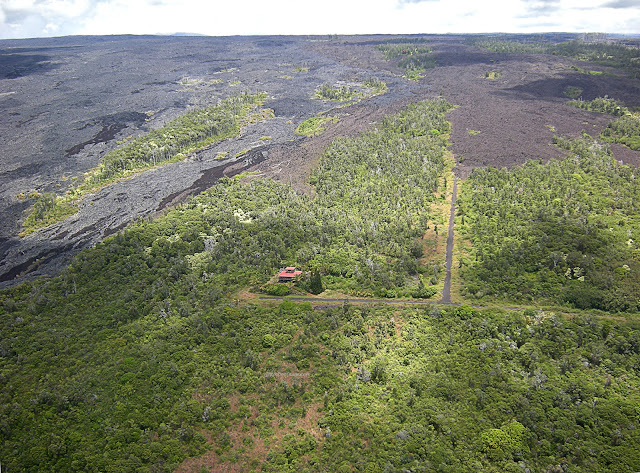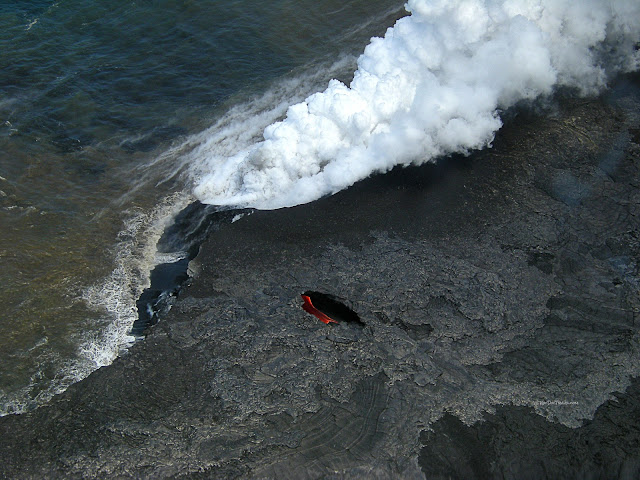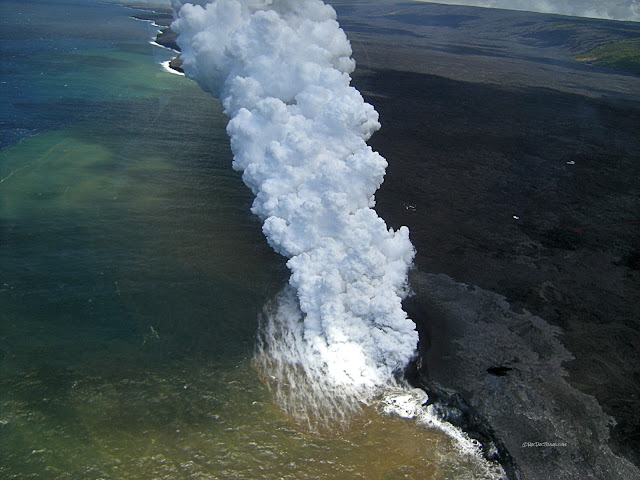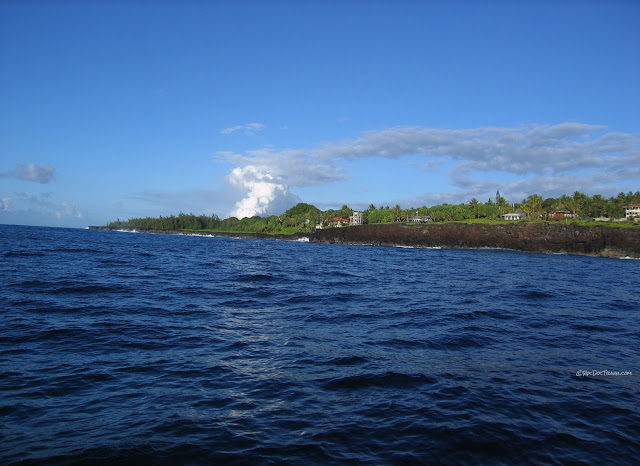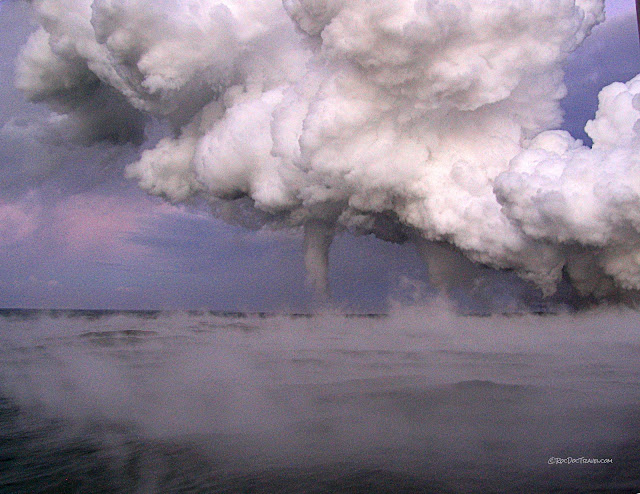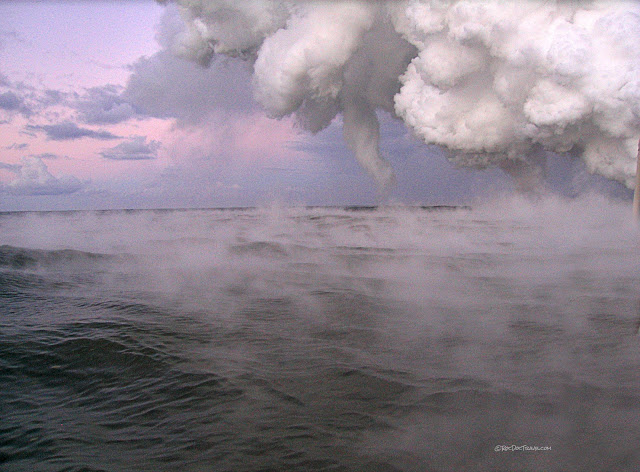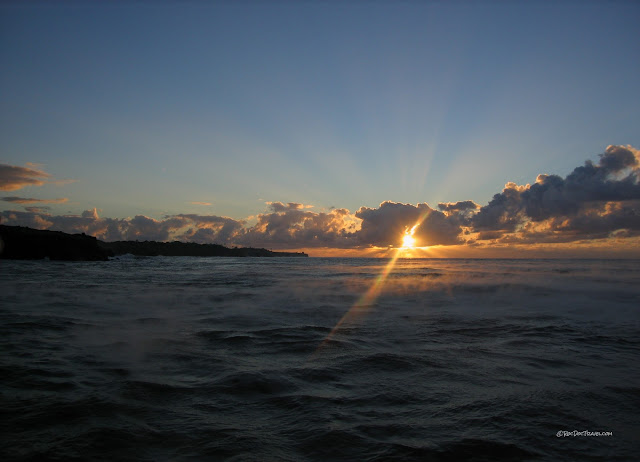Kilauea by Air and Sea
Kilauea, Hawaii by Air and Sea
Explore the world's most active volcano, Kilauea, by helicopter and boat to see the action up close. Feeling, smelling, touching, hearing the eruption will forever change you! This trip took place before the amazing eruptions of 2018.Travel to Kilauea
I love and prefer the island of Hawaii over the others. It's less crowded, less touristy, more friendly, and more genuine. And it has the best geology!Airlines: Plenty of flights are available to Hilo, some direct from the mainland.
Ground Transportation: I recommend renting a Jeep so you can go up the road to the top of Mauna Kea (4WD only) and to South Point (sandy) while you're here.
Lodging: Prices in Hilo are much better than on other islands, and options abound. Active and retired military can stay extremely inexpensively at the Kilauea Military Camp at Volcano.
Helicopter Tours: A Google search of "kilauea helicopter tour" will show you the options. The cost isn't as high as you might imagine, and it's worth it if you're at all interested in volcanoes. If you are a geologist, it's essential!
Boat Tours: A Google search for "kilauea boat tour" will show you the options. Recommended ONLY when there is an active ocean lava entry.
Difficulty: Anyone who can tolerate movement in the air or on a boat.
Considerations: With Kilauea, timing is everything. While the eruption lasted every day from January 1983 to August 2018, it changes constantly. The events worth waiting for are active surface lava flows and active ocean entry. You can monitor them at the Hawaii Volcano Observatory website here.
Related Activities: Explore Hilo, drive to the top of Mauna Kea at nearly 14,000 feet, swim with Manta Rays at Kona, visit South Point's green sand beach. This is Hawaii - you'll never run out of great things to do, no matter your interests or abilities!
Kilauea by Air
Geology of Kilauea Volcano
I flew in this helicopter from Hilo Airport out to Puu O'o crater, the Pali, and the ocean entry. The banking, take-off and landing, and low speeds of a helicopter make it a very different experience from an airplane.An aerial view of Hilo's country living is intriguing. You can see circular black rainwater collectors at almost every house, something I haven't seen on the mainland. It looks like living in paradise! The Leilani Estates devastated by the 2018 eruptions is at the far left.
From Hilo you fly over mile after mile of lava flows, some of which are only a few years old. Finally we approached the active lava tubes, marked by the gas plumes leaking from them. The big plume in the distance at right is Puu O'o, the cinder cone that has been emanating lava for several years.
The bright whiteness of the plume is the sulfur dioxide. The gas cloud was so thick, we couldn't see the lava inside the crater. The cloud is mostly sulfur dioxide and water vapor, and stinks to high heaven. The helicopters have to avoid it because it will kill the engine. In 2018, the lava suddenly and violently drained out of Pu'u O'o and flowed down the rift to the east, erupting in Leilani Gardens and surrounding areas. The crater in Pu'u O'o was over 1100 feet deep!
Puu O'o is on the right. Lava flows through tubes out to wherever they go - in this case, downhill to the ocean. Most of what we know about basaltic volcanism, we learned at Kilauea.
This view looks downhill from near Puu O'o to the ocean entry. Silvery lava flows are very recent pahoehoe (smooth or ropey texture), while a'a flows (jagged, blocky texture) look black.
One of the unexpected things you learn by visiting Kilauea is that brand new pahoehoe lava looks silver. It's coated with glass that quickly disintegrates in the rainy climate. When you walk on new lava, it sounds like you're walking on broken glass (because you are!). In this picture, you can see the flow lines where lava flowed out of the skylight and downhill on the surface.
This skylight in the lava tube gives us a view of the lava flowing inside. The hole is about 25 feet in diameter, and the lava inside is around 1100 degrees C.
"Pali" is the Hawaiian word for this steep scarp between Pu'u O'o and the ocean. In the early 1980's the Hawaiian Gardens subdivision was built here. Unfortunately that was right when Kilauea woke up and send wave after wave of lava flowing through the Pali, destroying all of the subdivision. You can just see some of the remnant streets.
Jack's Lava House (with the red roof) was the last remaining occupied structure in Hawaiian Gardens. There was even a Travel Channel special about it with Anthony Bordain. Unfortunately, it was finally destroyed by lava in 2012. You can see a video about its last day here on YouTube.
We followed the lava tubes down to the ocean entry. Here, you can see lava in the tube through a skylight.
The reaction when lava hits the water is violent!
When the 1100 degree C lava hits the water, it creates a violent phreatic explosion that breaks up the lava into chunks and sand and releases its sulfur compounds and other gases. It also heats the ocean water, creating the vapor you can see rising from the water.
The phreatic explosion turns the lava into sand. If the flow is sufficient to overpower the phreatic explosions, pillow lava forms under water.
Kilauea By Sea
When lava is actively entering the sea, a dawn or sunset boat tour is the only way to go! It will take you up close and personal to the lava, an experience you'll never forget. My visit changed my thinking about lava forever!This is the dock where we met before dawn for our ride, at Isaac Hale State Park. It was blocked by sand from the 2018 eruption in August, 2018. Of course, I didn't take pictures here in the dark, but only after we got back later in the morning.
The plume's bright whiteness is from its high sulfur dioxide content.
It's best to visit the plume and lava flows before sunrise and after sunset so you can see some of the lava's glow.
Broken-up droplets of lava are called "spatter." In addition to the big droplets seen here, there's a constant shower of hot sand falling from the plume. It's coated with sulfuric acid, and stings on your arms. We stayed under the boat's cover most of the time, but it was AWESOME to feel the sting!
Notice how the water is warm enough to form vapor in the warm, humid air. It feels about like a bathtub, but you wouldn't want to get in with the acidic cloud and falling ash overhead.
I was surprised at the violence, turbulence, and velocity of the rising plume! It rises so fast, it creates small tornadoes underneath!
Another tornado pulling warm, humid air and vapor into the churning, rising plume of sulfur dioxide and water vapor.
Watching the sun rise from a boat is a fantastic perk of taking a dawn boat trip.
Related Posts: Kilauea, Hilo Bay, South Point, Mauna Kea. Look for the label "volcano."
Related Websites: Hawaii Volcano Observatory click here A great site with background, current observations, webcams, photos, and videos.
As soon as I can, I'll have a YouTube video of the ocean entry.
